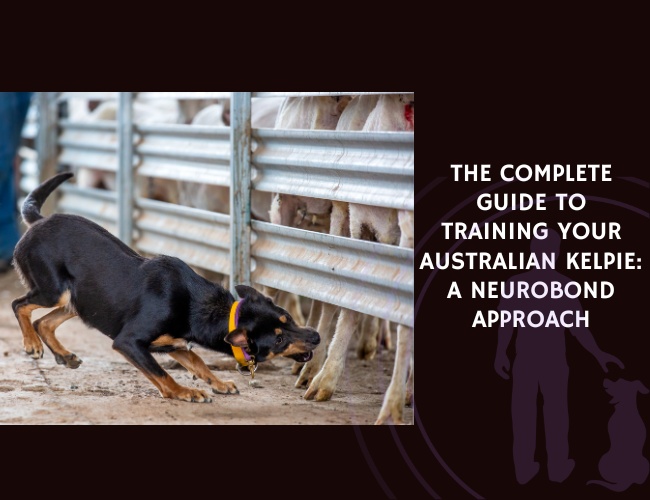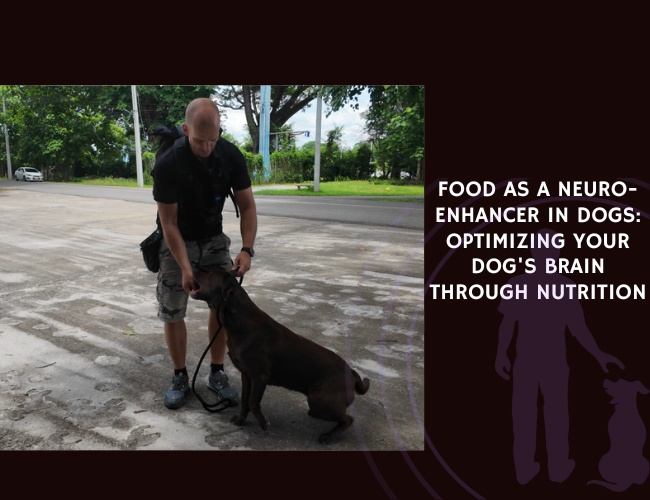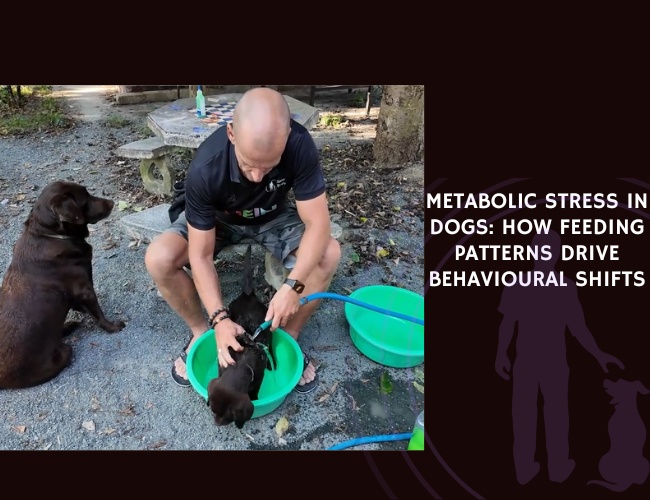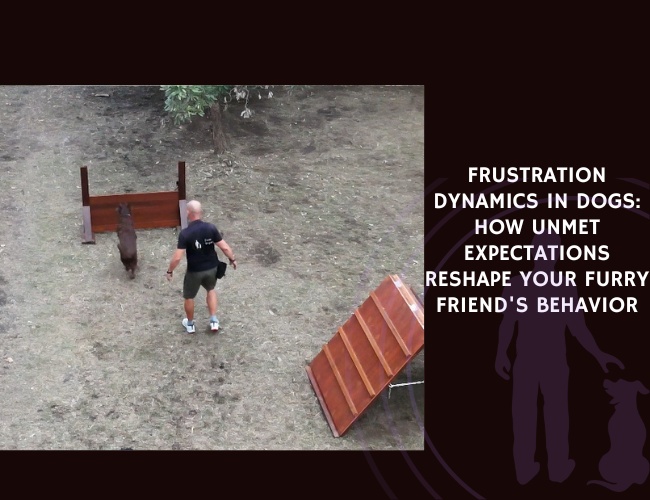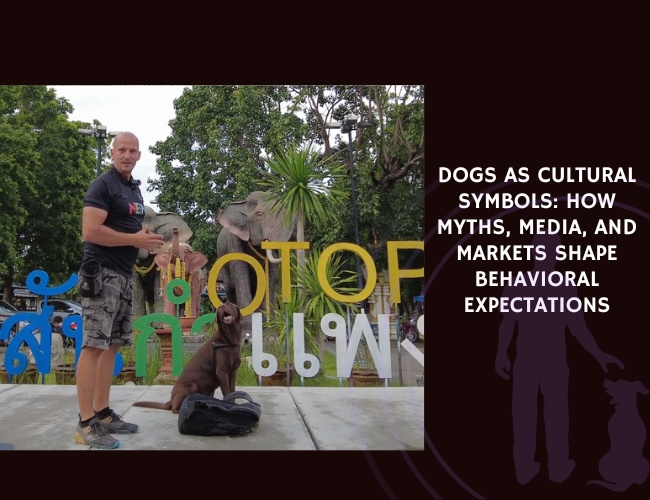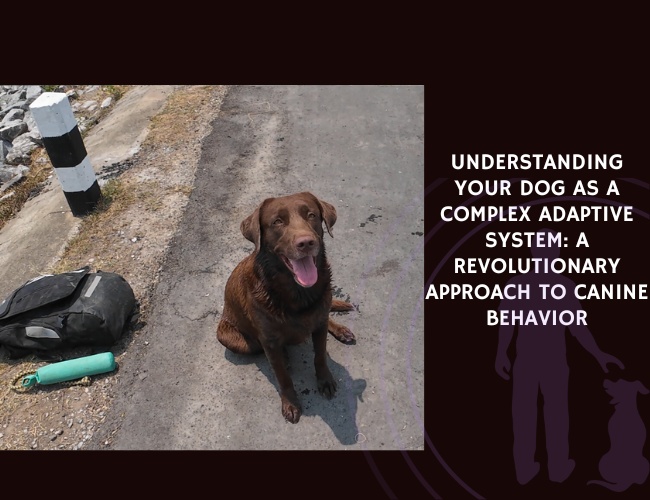Introduction: Understanding Your Kelpie’s Working Soul
When you welcome an Australian Kelpie into your life, you’re not just bringing home a dog – you’re inviting a tireless worker with the heart of the outback and a mind that never stops calculating. Born from the harsh Australian landscape where sheep stations stretched beyond the horizon, your Kelpie carries generations of problem-solving brilliance in their DNA. This isn’t a breed that was designed to sit pretty; they were crafted by necessity to think independently, work tirelessly, and form an unbreakable partnership with their handler.
The NeuroBond approach recognizes something fundamental about your Kelpie: their extraordinary 91% trainability score isn’t just about intelligence – it’s about their deep-seated need for purposeful connection. Where traditional training might try to suppress their independence, we’re going to channel it. Where others see stubbornness, we recognize a dog making calculated decisions based on centuries of selective breeding. Your Kelpie doesn’t need to be controlled; they need to be understood, connected with, and given the framework to express their remarkable capabilities.
Let us guide you through a training journey that honors your Kelpie’s heritage while building the invisible leash of trust that will transform them from a restless worker into your most devoted partner. 🧡
Character & Behavior: The Kelpie’s Operating System
The Working Mind Never Rests
Your Australian Kelpie’s brain operates differently from most companion dogs – think of it as having a processor that’s constantly running complex calculations. Research shows that Kelpies demonstrate exceptional spatial problem-solving abilities, but here’s what makes them unique: when faced with an unsolvable task, they’re the most likely among herding breeds to abandon it and seek a new solution. This isn’t giving up – it’s strategic thinking. Your Kelpie is constantly evaluating: “Is this worth my energy? Is there a better way?”
In the NeuroBond framework, we don’t fight this calculating nature – we become part of their equation. When your Kelpie looks at you during training, they’re asking, “Are you worth following? Do you have better solutions than I do?” This is why harsh commands fail spectacularly with Kelpies. They don’t respect authority for authority’s sake; they respect competence and consistency.
Independence Meets Sensitivity
Here’s the beautiful paradox of the Kelpie temperament: they’re fiercely independent yet surprisingly sensitive. Studies identify three traits most strongly correlated with herding excellence in Kelpies: initiative, persistence, and confidence. That persistence – linked to genes affecting fear-memory and pain perception – means your Kelpie will push through discomfort to complete a task they deem important. But this same dog can shut down completely if training becomes harsh or unpredictable.
The NeuroBond approach leverages this sensitivity. We’re not breaking their spirit or demanding submission. Instead, we’re creating a context where their independence serves the relationship. When your Kelpie chooses to stay close, chooses to check in with you, chooses to follow your lead – that’s not obedience, that’s partnership. And for a breed that was designed to make split-second decisions about hundreds of sheep, choosing you becomes the ultimate expression of trust.
The Energy Equation
Let’s address the elephant in the room: your Kelpie was bred to run and think for 12+ hours daily. Not two hours. Not four. All day. This isn’t hyperactivity – it’s purposeful energy waiting for direction. Without proper outlets, this energy doesn’t dissipate; it transforms into frustration behaviors like obsessive herding of children, destructive chewing, or that infamous Kelpie “selective deafness” when they’ve decided your requests aren’t interesting enough.
The NeuroBond philosophy recognizes that suppressing this energy is impossible and unnecessary. Instead, we channel it through structured experiences that satisfy both body and mind. Your training sessions become puzzles to solve, not commands to obey. Every interaction becomes an opportunity for your Kelpie to use their remarkable brain while strengthening your connection. 🐾
Vocalization & Communication: Understanding How Your Kelpie “Talks”
The Silent Conversation
Unlike many breeds, Kelpies aren’t naturally vocal – they were bred to work quietly to avoid startling livestock. But this doesn’t mean they’re not communicating. Your Kelpie speaks volumes through body language, and understanding this silent conversation is crucial for NeuroBond training. Watch for the subtle ear flick when they’re processing information, the slight weight shift when they’re about to make a decision, the intensity of their famous “Kelpie stare” that can range from “I’m problem-solving” to “I need guidance.”
Research shows Kelpies spend the largest proportion of time on human-directed behavior during problem-solving tasks compared to other breeds. This means your Kelpie is constantly checking in with you, even when they appear independent. They’re reading your micro-expressions, your breathing patterns, your energy shifts. In NeuroBond training, we consciously use this bi-directional communication. Your calm presence becomes their anchor; your engaged attention becomes their reward.
When Silence Breaks
When a typically quiet Kelpie becomes vocal, pay attention – they’re telling you something important. Excessive barking often signals unmet needs: insufficient mental stimulation, unclear boundaries, or confusion about their role in your pack. The NeuroBond approach doesn’t suppress this communication; we address its root cause. A barking Kelpie during training isn’t being defiant – they’re expressing frustration with unclear expectations or boring repetition.
Instead of commanding “quiet,” we ask: “What are you trying to tell me?” Often, it’s that the training has become too predictable, too simple, or disconnected from their instinctive drives. By adjusting our approach – adding complexity, incorporating movement, or shifting to a different skill – we address the message behind the bark. Your Kelpie learns that communication works, that you’re listening, and gradually, the need for vocal protests diminishes.
The Power of the Pause
In NeuroBond training with Kelpies, silence becomes our most powerful tool. When your Kelpie is wrestling with a decision – should I chase that bike or stay with my human? – your quiet confidence speaks louder than any command. This breed’s exceptional cognitive abilities mean they’re always processing, always calculating. By creating moments of pause in training, we give them space to choose correctly rather than react instinctively.
This is especially powerful during leash training. Instead of constantly correcting pulling, we simply stop. No tension, no anger, just stillness. Your Kelpie’s active mind quickly calculates: “Movement stopped when I pulled. Movement resumed when I released tension.” They’re not being forced into compliance; they’re discovering the solution themselves – exactly how they’d work out how to move sheep through a gate. 🧠
Training & Education: The NeuroBond Method in Action
Building the Foundation: Trust Before Tasks
The NeuroBond approach with Kelpies begins not with commands but with connection. Your Kelpie’s working heritage means they’re genetically programmed to form intense bonds with their handler – in the outback, this bond meant survival. We tap into this instinct from day one. During the critical socialization window (3-14 weeks), we’re not just exposing them to stimuli; we’re teaching them that you are their safe base, their decision-making partner, their most interesting puzzle to solve.
Start with what we call “magnetic moments” – times when your Kelpie chooses proximity without being asked. Sitting quietly with a book while your Kelpie settles nearby. Walking in a secure area without a leash, letting them choose to orbit around you. These moments build the invisible leash stronger than any physical restraint. Your Kelpie learns that being near you leads to interesting experiences, mental stimulation, and emotional security.
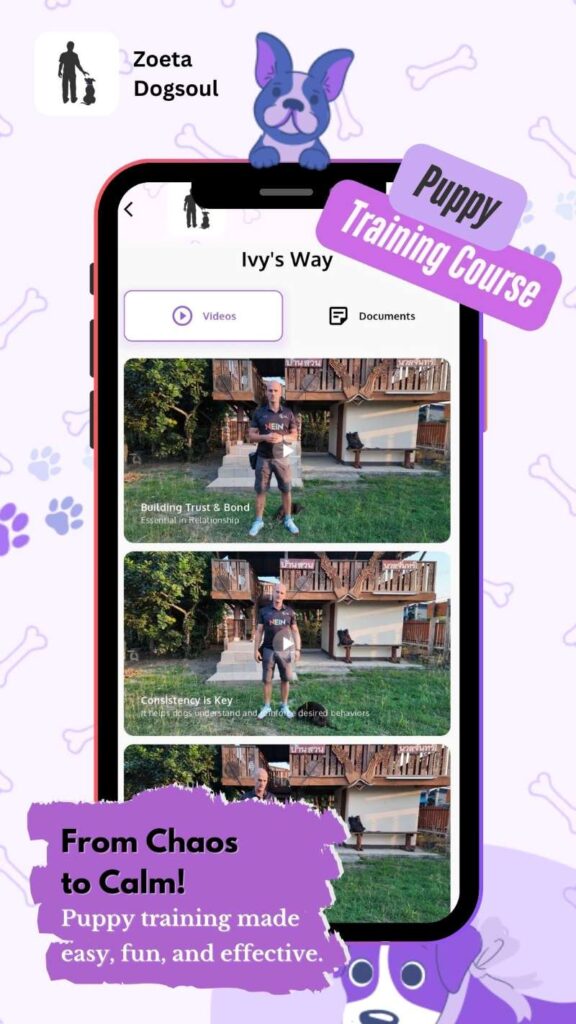
The Learning Ladder: From Instinct to Intent
Kelpies excel when training follows their natural problem-solving sequence. Instead of teaching “sit” through repetition, we create situations where sitting becomes the logical solution. Stand on the leash with just enough length that standing is uncomfortable but lying down or sitting is comfortable. No commands, no pushing – just patient waiting. When your Kelpie discovers the solution and chooses to sit, that’s when we mark and reward. They’ve not just learned a behavior; they’ve solved a puzzle.
This approach satisfies their need for mental stimulation while building behaviors that last. Your Kelpie isn’t performing tricks; they’re making conscious choices. Progress through increasingly complex scenarios: sitting before doors open, settling before meals arrive, checking in during walks before investigating interesting smells. Each success reinforces their role as a thinking partner, not a obedient subordinate.
Addressing the Kelpie Challenge: Selective Hearing and Loophole Finding
Your Kelpie’s intelligence means they’re master loophole finders. Ask them to “stay” and they might technically stay while army-crawling toward their goal. This isn’t defiance – it’s brilliant problem-solving that would be rewarded in working contexts. The NeuroBond approach doesn’t punish this creativity; we refine it.
Instead of adding more rules, we clarify intent. We teach concepts, not just commands. “Stay” becomes “maintain this position until released,” taught through gradual duration building where breaking position simply resets the exercise without emotion. Your Kelpie learns that finding loopholes doesn’t achieve their goal (release and reward), but genuine compliance does. We’re not suppressing their intelligence; we’re channeling it toward mutual understanding.
The Persistence Factor: Turning Stubbornness into Strength
Research identifies persistence as one of the strongest predictors of herding ability in Kelpies, linked to unique genes affecting fear-memory and pain perception. This means your Kelpie will persist through frustration that would stop other dogs. In traditional training, this creates battles of will. In NeuroBond training, we redirect this persistence toward problem-solving.
When your Kelpie fixates on something inappropriate (chasing cars, herding children), we don’t just say “no.” We provide an alternative that satisfies the same drive. Car chasing becomes “find the hidden toy” games that require intense focus and movement. Child herding becomes “gather the scattered balls” exercises. We’re honoring their instincts while creating appropriate outlets. Your Kelpie’s persistence becomes an asset, driving them to master increasingly complex tasks that strengthen your bond.
Performance & Activities: Channeling the Working Drive
Beyond Physical Exercise: The Mental Marathon
Here’s a truth many Kelpie owners learn the hard way: running your dog for miles won’t tire them out. They’ll recover within an hour, ready for more. This isn’t a flaw – it’s a feature. Kelpies were designed for endurance that outlasts any human’s ability to provide physical exercise. The NeuroBond approach recognizes that mental fatigue is what truly satisfies a Kelpie.
Structure activities that combine movement with decision-making. Scent work where they must choose between multiple hidden rewards based on specific criteria. Agility sequences where you change the pattern mid-run, requiring split-second adjustments. Herding games using large exercise balls where they must move objects to specific locations using only body pressure, no mouth. These activities exhaust the brain while exercising the body, creating the deep satisfaction your Kelpie craves.
The Working Partnership: Beyond Obedience to Collaboration
Your Kelpie doesn’t want to be your subordinate; they want to be your working partner. In the NeuroBond framework, performance activities become collaborative problem-solving sessions. Set up scenarios where you need their help: “We need to get all these toys into that box, but I can’t touch them – can you figure it out?” Watch your Kelpie’s entire demeanor change when they realize they’re needed, not just commanded.
This shift from obedience to collaboration transforms everything. Recall isn’t “come because I said so” but “come help me with this interesting thing.” Heel position isn’t “walk precisely here” but “stay close because we’re navigating this together.” Your Kelpie’s exceptional spatial intelligence and human-directed behavior tendencies mean they’re constantly calculating how to be most helpful. Give them that opportunity, and their responsiveness skyrockets.
Managing the Herding Instinct: Redirection Not Suppression
The instinct to chase and control movement is hardwired into your Kelpie’s DNA. Children running, bikes passing, other dogs playing – all trigger the same neural pathways that once moved thousands of sheep. The NeuroBond approach doesn’t try to eliminate this instinct (impossible and cruel) but redirects it constructively.
Create controlled herding experiences: teach your Kelpie to “push” family members toward specific locations on cue, to gather scattered toys into groups, to move between “posts” (trees, cones) in specific patterns. These exercises satisfy the herding drive while establishing you as the director of when and how herding happens. Your Kelpie learns that the urge to control movement has appropriate outlets, reducing the compulsion to herd inappropriately. The key is preemptive satisfaction – a Kelpie whose herding needs are met through structured activities is far less likely to problematically herd children or chase cars. 🐾
Relentless. Calculating. Connected.
A working mind in motion. Your Kelpie’s brain runs like a high-speed processor, constantly calculating, testing, and reevaluating every situation. What looks like stubbornness is often strategic thinking, a heritage of problem-solving forged in the vast landscapes of rural Australia.
Independence woven with sensitivity. Beneath their fierce autonomy lies a surprisingly delicate core that reacts deeply to tone, energy, and fairness. Harshness shuts them down, but consistency and competence inspire willing collaboration. This duality makes the Kelpie both powerful and profoundly human-centered.
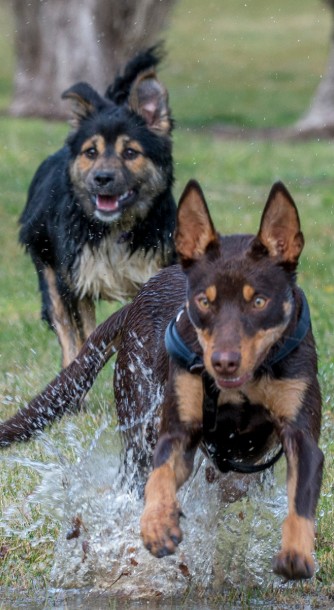
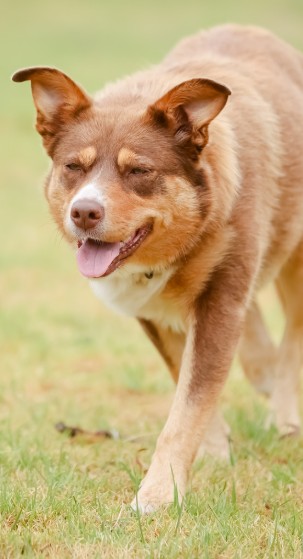

Partnership as the true goal. Training a Kelpie isn’t about domination—it’s about crafting an invisible leash of trust. When they choose you over chaos, when they pause to check in before charging forward, you’re witnessing the culmination of centuries of selective breeding transformed into a modern bond.
Nutritional Recommendations: Fueling the Always-On Brain
The Metabolic Reality of Working Genetics
Your Kelpie’s nutritional needs reflect their working heritage – they’re metabolically designed for sustained energy output rather than burst activity. This means their blood sugar regulation, muscle fiber composition, and even their gut microbiome differ from companion breeds. Research into working dog nutrition shows that Kelpies maintain higher baseline metabolic rates even at rest, constantly ready to spring into action.
The NeuroBond approach extends to nutrition: we’re not just filling a bowl but fueling a partnership. Split meals into 2-3 smaller portions to maintain stable energy throughout training sessions. Your Kelpie’s cognitive performance directly correlates with blood sugar stability. That moment when they suddenly seem stubborn or disconnected during training? Often it’s a blood sugar dip affecting their remarkable problem-solving abilities.
Brain Food for the Thinking Dog
Kelpies’ exceptional cognitive abilities require specific nutritional support. Omega-3 fatty acids (particularly DHA) support the neural pathways involved in learning and memory consolidation. During intensive training periods using the NeuroBond method, your Kelpie’s brain is forming new neural connections at a rapid rate. Quality proteins provide the amino acids necessary for neurotransmitter production – the chemical messengers that allow your Kelpie to process the complex decisions we’re asking them to make.
Consider adding puzzle feeders and work-for-food scenarios to meal times. This isn’t just enrichment; it’s training continuation. Your Kelpie’s meal becomes another problem to solve, another opportunity to think. Scatter feeding in grass, hiding portions around the yard, using increasingly complex puzzle toys – every meal reinforces that resources come through thinking and working, not just waiting.
The Sensitivity Factor: Reading Nutritional Feedback
That surprising sensitivity in your Kelpie’s temperament extends to their digestive system. Many Kelpies show food sensitivities that manifest not just as digestive issues but as behavioral changes – increased reactivity, difficulty focusing, or sudden training regression. The NeuroBond approach means paying attention to these subtle feedback signals.
Keep a training and food journal during your first year together. Note connections between dietary changes and training responsiveness. That week when your usually brilliant Kelpie couldn’t seem to grasp simple concepts? Check what changed in their diet. The NeuroBond relationship means understanding your dog as a complete system where nutrition, behavior, and training interconnect. Your Kelpie’s body is constantly giving you feedback – learning to read it strengthens your partnership beyond the training field.
Health Concerns: The Mind-Body Connection in Training
Genetic Persistence and Pain Perception
Here’s something remarkable about your Kelpie: research has identified genes affecting pain perception and fear-memory that were specifically selected for in working lines. This means your Kelpie might not show obvious signs of discomfort until an issue is advanced. In the NeuroBond framework, this makes our observation skills crucial. Changes in training responsiveness often signal physical issues before obvious symptoms appear.
Watch for subtle shifts: your usually persistent Kelpie suddenly abandoning tasks, hesitation before jumps they normally clear easily, or that telling moment when they look at you instead of pushing through a challenge. These aren’t training failures; they’re communication. The deep connection you’ve built through NeuroBond training means your Kelpie trusts you to notice when something’s wrong, even when their genetics tell them to hide it.
The Frustration-Health Cycle
Kelpies’ high intelligence means that physical limitations create profound frustration. An injured Kelpie isn’t just physically uncomfortable; they’re mentally distressed by their inability to work. This can manifest as increased reactivity, destructive behavior, or depression that seems disproportionate to the physical issue. The NeuroBond approach provides framework for maintaining connection during recovery.
During injury or illness, shift from physical to mental work. Scent discrimination exercises done while lying down. “Touch” training where they indicate objects with their nose while staying stationary. Complex food puzzles that require thinking, not moving. You’re maintaining the working partnership even when the body needs rest. Your Kelpie learns that their value to you isn’t just in their physical capabilities but in their mind and partnership.
Preventive Partnership: Training as Health Monitoring
The NeuroBond relationship creates an early warning system for health issues. Because you’re constantly engaged in nuanced communication with your Kelpie, you’ll notice changes others might miss. That slight hesitation before responding to a cue they know well. The moment they choose to rest rather than engage in a favorite activity. These micro-changes, visible only through deep connection, allow for early intervention.
Use training sessions as health assessments. Regular “body handling” exercises where your Kelpie learns to enjoy and accept thorough physical examination become bonding moments rather than veterinary preparation. Teach them to offer each paw for inspection, to open their mouth on cue, to stand still for coat examination. This isn’t just husbandry training; it’s deepening trust while enabling you to catch health issues early. Your Kelpie learns that allowing vulnerability strengthens your partnership. 🧡

Lifestyle & Environment: Creating the Kelpie’s Optimal World
Space Isn’t Everything: Mental Territory Matters More
Many believe Kelpies need vast acreage to thrive, but the NeuroBond approach reveals a different truth: mental territory matters more than physical space. Your Kelpie needs complexity, not just area. A small yard with varied surfaces, hiding spots, elevated platforms, and changing enrichment provides more satisfaction than empty acres. They need an environment that challenges their remarkable spatial intelligence and problem-solving abilities.
Create micro-environments within your space. Today, the backyard is a scent-tracking course. Tomorrow, it’s an agility playground. Next week, it’s a herding arena with moveable objects. Your Kelpie learns that their environment is dynamic, always offering new problems to solve. This prevents the frustration-driven behaviors (fence running, obsessive digging) that arise when an intelligent dog faces the same static environment daily.
The Social Architecture: Your Kelpie’s Place in the Pack
Kelpies were bred to work independently yet remain connected to their handler – a unique social structure that affects how they integrate into family life. The NeuroBond approach helps establish your Kelpie’s role within your household’s social architecture. They need to understand their position: not the boss, but not subordinate to everyone. They’re a valued team member with specific responsibilities.
Assign your Kelpie jobs within the family routine. They might be responsible for “gathering” family members for dinner, “checking” that doors are closed at bedtime, or “supervising” children’s outdoor play. These aren’t just cute tricks; they’re fulfilling your Kelpie’s deep need for purpose. Watch how their entire demeanor changes when they have genuine responsibilities. The anxious, destructive Kelpie transforms into a focused, satisfied partner who knows their value in the family system.
Environmental Enrichment Through Predictable Unpredictability
Your Kelpie’s brain craves novelty within structure – what we call “predictable unpredictability” in the NeuroBond framework. Maintain consistent daily rhythms (wake time, meal times, quiet periods) while varying the content within those rhythms. Morning training happens daily, but today it’s scent work, tomorrow it’s trick training, the next day it’s herding games.
This approach satisfies two competing needs in your Kelpie’s psychology: the working dog’s need for routine and the problem-solver’s need for novelty. They know when to expect activity (reducing anxiety) but not what that activity will be (maintaining engagement). Your home environment becomes a constantly evolving puzzle that never quite repeats, keeping your Kelpie’s remarkable mind engaged without creating chaos.
Senior Care: Honoring the Aging Working Mind
The Cognitive Shift: When the Calculator Slows
As your Kelpie ages, their legendary persistence might remain while processing speed decreases. This creates unique challenges – they’re still driven to work but frustrated by their changing capabilities. The NeuroBond approach adapts to honor their lifetime of service while accommodating new limitations. We don’t retire them; we transition their job description.
Senior Kelpies often excel at mentoring younger dogs, teaching through demonstration rather than active participation. Set up training scenarios where your senior Kelpie can “supervise” while you work with another dog, rewarding them for calm observation. They’re still working, still valued, still essential to the training process. This maintains their sense of purpose while respecting physical limitations.
Adapting Without Diminishing
The sensitivity that made your Kelpie such a responsive training partner becomes more pronounced with age. They’re acutely aware of their changing abilities and can become depressed if they feel useless. The NeuroBond framework prevents this by constantly adapting challenges to remain achievable yet engaging. Replace jumping exercises with ground-level puzzles. Transform running recalls into finding games that emphasize nose work over speed.
Most importantly, maintain the communication patterns you’ve built over years. That silent conversation, those moments of shared decision-making – these become even more precious as your Kelpie ages. They might not be able to herd for hours, but they can still problem-solve, still choose to maintain connection, still be your thinking partner. The invisible leash you’ve built through NeuroBond training becomes their comfort and security as they navigate aging.
The Legacy of Connection
A senior Kelpie trained through the NeuroBond approach carries a lifetime of choosing partnership over independence. This accumulated trust becomes their comfort in declining years. Medical procedures are less stressful because they trust your decisions. Mobility limitations are less frustrating because they know you’ll find new ways to engage their mind. The relationship you’ve built becomes their safety net.
Continue learning together until the end. Teach your 14-year-old Kelpie new tricks – not because you need them to perform, but because learning together has always been your language of love. The NeuroBond philosophy means training never stops; it just evolves to meet your dog where they are. Your senior Kelpie might move slower, but their eyes still light up when presented with a problem to solve alongside their trusted human. 🐾
Conclusion: Is the Australian Kelpie Right for You?
The Truth About Living with Brilliance
Let’s be completely honest: living with an Australian Kelpie using the NeuroBond approach isn’t for everyone. This isn’t a breed that will be satisfied with weekend warrior adventures and evening Netflix sessions. Your Kelpie will challenge you daily – not through defiance, but through their sheer intellectual and physical capacity. They’ll expose every inconsistency in your training, find every loophole in your rules, and require you to be as engaged in the partnership as they are.
But here’s what you get in return: a partner whose loyalty transcends obedience, whose intelligence makes every day an adventure, and whose trust, once earned, is absolute. Through the NeuroBond approach, you’re not just training a dog; you’re entering into one of the most profound interspecies relationships possible. Your Kelpie will teach you about persistence, about problem-solving, about the deep satisfaction of working in true partnership.
The Daily Reality Check
Ask yourself honestly: Can you provide 2-3 hours daily of combined mental and physical engagement? Not just exercise – true engagement where you’re actively problem-solving together? Can you maintain consistency while embracing creativity in training? Can you respect your dog’s intelligence enough to let them be a thinking partner rather than an obedient subordinate? Can you see behavioral challenges as communication rather than defiance?
If you’re nodding yes, if the idea of a dog who requires your full participation excites rather than exhausts you, then a Kelpie might be your perfect match. The NeuroBond approach will guide you, but success requires your complete commitment. Your Kelpie will know – with that uncanny perception selected over generations – whether you’re truly present or just going through the motions.
The Invitation to Partnership
The Australian Kelpie offers something rare in our modern world: the opportunity for genuine partnership with another species. Through the NeuroBond approach, you’re not buying a pet or training a companion – you’re entering into a working relationship that will transform both of you. Your Kelpie will push you to be clearer in your communication, more consistent in your behavior, and more creative in your problem-solving.
This journey isn’t about dominance or control. It’s about two different species finding a common language, building mutual trust, and creating something together that neither could achieve alone. Your Kelpie brings the genes of countless working dogs who moved millions of sheep across an unforgiving landscape. You bring the willingness to honor that heritage while adapting it to modern life. Together, through the NeuroBond framework, you’ll build an invisible leash stronger than any physical restraint – the unbreakable connection of true partners.
Are you ready to let your dog be themselves while becoming more than you imagined possible? Are you prepared to be trained by your dog as much as you train them? Can you embrace the beautiful chaos of living with a mind that never stops calculating? If so, the Australian Kelpie and the NeuroBond approach await. Welcome to a partnership that will challenge, exhaust, and ultimately transform you. Welcome to life with a Kelpie. 🧡

